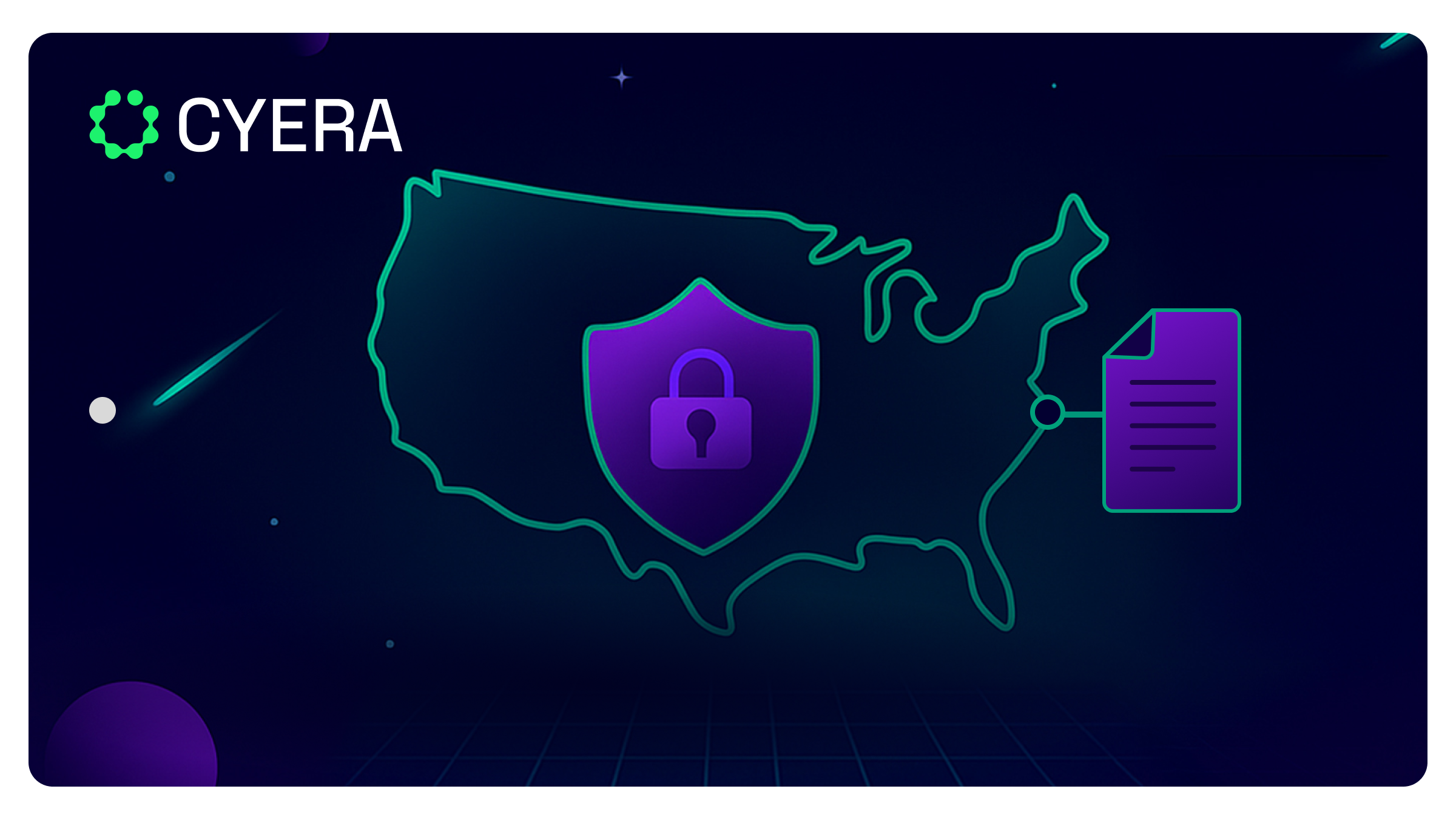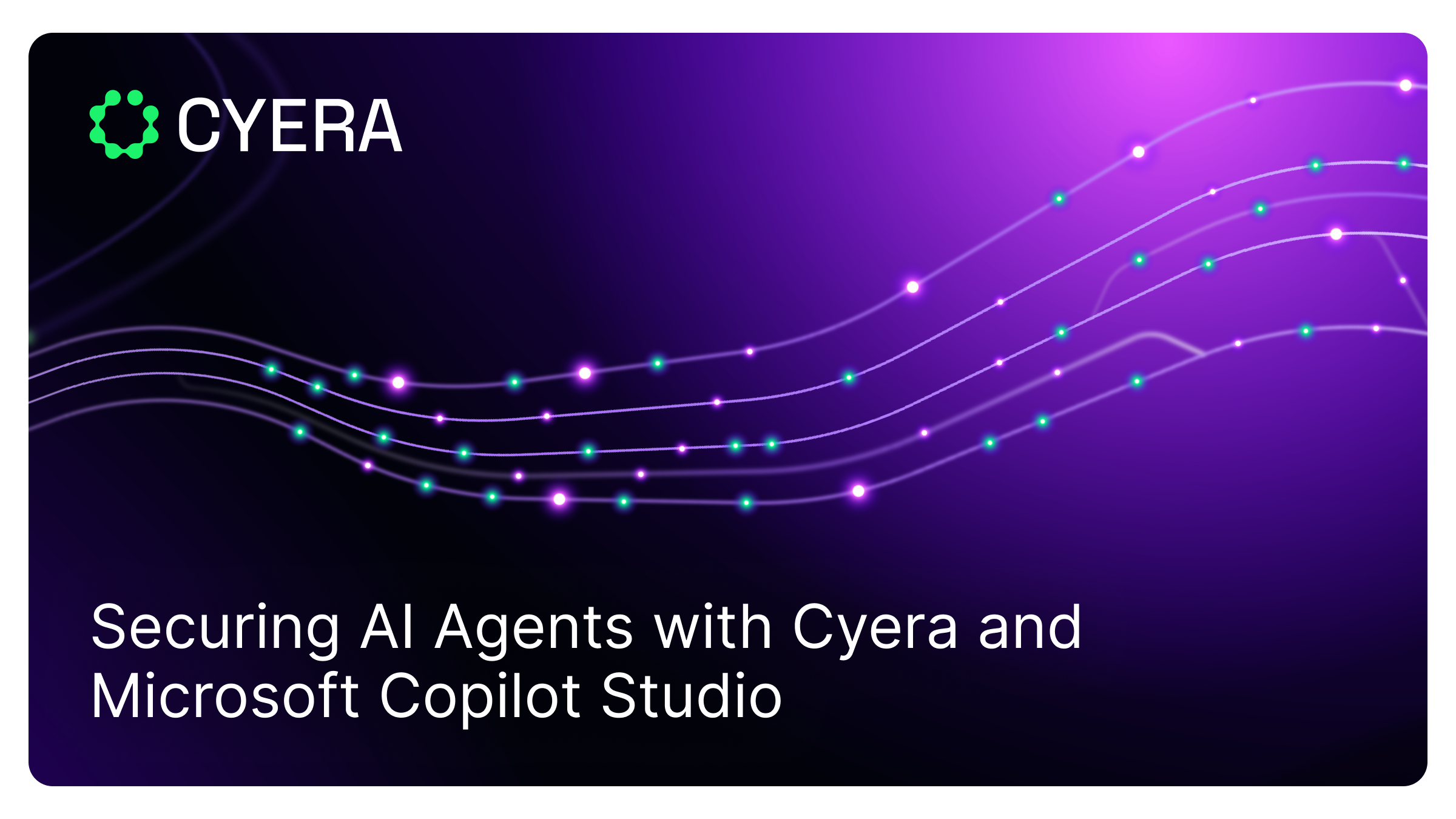DSPM for SaaS (2025 Guide)

DSPM for SaaS: Why Data Security Posture Management is Essential for Cloud Applications (2025 Guide)
SaaS applications are now the foundation of how businesses operate, powering everything from daily tasks to major operations in the cloud. This shift has brought incredible speed and flexibility, but it’s also created serious challenges for security teams trying to keep data safe.
As companies rely on more apps, it gets tougher to track where sensitive information is stored, who can access it, and whether it meets compliance requirements. Traditional security approaches are not designed for this new reality, leaving gaps that cybercriminals and insider threats can exploit.
That’s where Data Security Posture Management (DSPM) becomes necessary. It helps organizations gain visibility into their SaaS data, reduce risks, and maintain compliance, making it a core part of cloud security in 2025 and beyond.
This guide will walk you through everything you need to know about DSPM for SaaS, including why it's required for any modern security strategy.
The SaaS Data Security Challenge: Why Traditional Approaches Fall Short
SaaS tools now power nearly every part of business, with organizations using more than 100 applications on average. While this drives efficiency, it also scatters sensitive data across platforms like Salesforce, Microsoft 365, Google Workspace, and Slack.
This data sprawl has created visibility gaps that traditional perimeter-based security cannot keep up with. Without a central view, it's nearly impossible to know:
- Where your most sensitive data is actually stored
- Who has access to it
- If the data is overexposed
- If there are misconfigurations in your SaaS apps that are creating vulnerabilities
These challenges are due to factors unique to SaaS environments, including shared responsibility models, limited control over infrastructure, and the rapid spread of new applications. Recognizing this, 75% of organizations plan to adopt DSPM in 2025 to gain visibility, reduce risk, and close the gaps that traditional approaches leave open.
What Makes DSPM for SaaS Different from Traditional Data Security
DSPM solutions are built specifically for the cloud and offer advantages that older tools can’t match. Here’s what you’ll get:
- SaaS-specific data discovery: DSPM platforms can connect to thousands of SaaS and cloud platforms through pre-built integrations, giving you a full inventory of where data lives across hybrid multicloud environments.
- Context-aware classification: Instead of just flagging files, DSPM understands how data is used. It identifies sensitive information in collaboration platforms, CRM systems, and productivity suites, while mapping how it flows between them.
- API-driven approach: Unlike agent-based tools that can slow down performance, DSPM uses native SaaS APIs. This allows for wider coverage and real-time visibility without interfering with your teams’ productivity.
- Cross-application data lineage: DSPM follows data as it moves, like a customer record starting in Salesforce, shared via Slack, and saved in Google Drive, helping you see the full path.
Core DSPM Capabilities for SaaS Environments
Here are the core capabilities you’ll need from a DSPM platform to effectively secure SaaS environments. Each one addresses a unique challenge of protecting data that moves across multiple cloud applications.
Automated SaaS Data Discovery
Many companies use both approved and unapproved SaaS apps, often called shadow IT. A good DSPM tool constantly checks all connected systems to find where sensitive data is stored.
For example, Cyera can scan vast data volumes across cloud and on-premises data stores, giving you thorough coverage. This discovery engine can handle different types of data, including structured data such as CRM records, semi-structured data like tickets and forms, and unstructured content like documents and emails.
AI-Powered Classification with SaaS Context
Once data is discovered, DSPM uses AI-driven classification to understand the type and sensitivity of information within each SaaS platform.
Cyera DSPM platform achieves up to 95% precision and adapts to your organization’s data types. This includes customer records in Salesforce, patient information in healthcare applications, or financial transactions in fintech platforms.
Classification is context-aware. Instead of treating all files the same, the DSPM platform takes application metadata and business usage into account.
SaaS Access Governance and Risk Assessment
Once data is identified and classified, the next challenge is controlling access.
DSPM maps identities across federated SaaS environments to give a clear view of who has access to what. It highlights excessive permissions, risky sharing practices in collaboration tools, and policy violations that expose sensitive data.
Beyond detection, DSPM evaluates compliance and cybersecurity risk, helping reduce alert fatigue and enforce stronger, more consistent controls across all SaaS applications.
The Growing SaaS Data Security Market in 2025
The SaaS data security market keeps expanding as cyberthreats grow more targeted and sophisticated. One of the biggest drivers is data volume. The global datasphere is projected to grow more than 50%, from 120 zettabytes in 2023 to 181 zettabytes by 2025.
This explosive data growth is driving significant investment in security solutions. The DSPM market size has expanded rapidly as organizations realize they need better visibility into their cloud data. Industry analysts project continued strong growth as more companies recognize that traditional security approaches can't handle modern SaaS environments.
At the same time, regulations like GDPR, CCPA, and healthcare-specific rules are putting stricter requirements on how SaaS data is handled. In response, DSPM has become the fastest-growing category in cloud security and a must-have tool in every security leader’s stack.
Key SaaS Use Cases for DSPM
These are some ways organizations are using DSPM to solve specific, real-world data security challenges across their SaaS ecosystems.
Microsoft 365 and Google Workspace Protection
Productivity suites contain large amounts of sensitive data. DSPM helps maintain visibility and control in these environments by:
- Discovering sensitive data in SharePoint, OneDrive, Google Drive, and collaborative files.
- Monitoring data sharing patterns to identify oversharing risks.
- Using productivity suite APIs to provide real-time visibility into sensitive content.
CRM and Sales Platform Security
CRMs like Salesforce and HubSpot house valuable customer data that must be secured for both trust and compliance. DSPM strengthens CRM security by:
- Protecting customer records and sales data in CRM platforms.
- Monitoring lead generation and customer communication records.
- Ensuring compliance with data privacy regulations such as GDPR and CCPA.
Communication and Collaboration Platform Governance
Messaging and collaboration tools improve teamwork but also create risks of accidental data exposure. DSPM enables safer collaboration by:
- Securing sensitive PII across apps like Slack, Zendesk, Microsoft 365, and Google Workspace.
- Monitoring real-time data sharing in platforms like Slack and Microsoft Teams.
- Preventing inadvertent leaks of confidential information in chat histories and shared channels.
Development and DevOps SaaS Security
Developer platforms contain intellectual assets like code repositories and API keys, which need strong safeguards. DSPM supports secure DevOps by:
- Protecting code repositories, API keys, and development data in GitHub, GitLab, Jira, and Confluence.
- Scanning workflows for hardcoded secrets and credentials.
- Protecting intellectual property across development platforms.
AI and GenAI Implications for SaaS DSPM
AI and generative AI in SaaS apps bring both risks and benefits for DSPM. Below are the main implications (both for security and innovation) every enterprise should consider.
Challenges
- SaaS AI Copilots’ risk. Copilots can boost productivity, but they also handle sensitive data. A single prompt could expose confidential information if you don’t put controls in place.
- Data governance challenges with AI services. When SaaS apps connect to LLMs or external AI platforms, data may leave your company’s boundaries, making compliance and visibility harder to maintain.
Opportunities
- Automated lineage for structured and unstructured data. Reasoning techniques like retrieval-augmented generation (RAG) can help DSPM automatically map both structured and unstructured data flows, strengthening accuracy and response times.
- The case for AI-native DSPM. Traditional tools fall short in AI-enhanced SaaS. Purpose-built AI-native DSPM can monitor copilots and agents, enforce policies, and adapt as models evolve.
Integration Strategies: DSPM and Your SaaS Security Stack
To get the most value from DSPM, you need to think about how it fits into your broader SaaS security ecosystem.
Complementing Existing SaaS Security Tools
DSPM works best when you layer it with the SaaS security controls you already use. For example, it complements CASB solutions by extending coverage from access-level monitoring into the actual data stored and shared.
DSPM also integrates with DLP tools and identity management systems, helping you close the loop between detection and response. When you connect DSPM with IAM platforms, you can automate access changes and revoke or adjust permissions in real time to reduce any risks of exposure.
API-First Integration Approach
A modern DSPM platform is built with APIs at the center. By using native SaaS APIs, you gain accurate, deep visibility into your data across applications. Webhook integrations then allow for real-time monitoring and alerting, so you can act the moment risks appear.
Look for DSPM solutions that provide full API access, giving you flexibility to plug into your existing security stack and unify data insights across your tools.
Overcoming Common SaaS DSPM Implementation Challenges
Rolling out DSPM in a SaaS-heavy environment isn’t always straightforward. Organizations face hurdles like shadow IT, classification accuracy, and scale. However, with the right strategies, you can overcome them and get lasting value.
Shadow IT and Unsanctioned SaaS Discovery
Employees often bring in unsanctioned SaaS tools and AI models without approval. These shadow apps can hold sensitive data outside your visibility.
A strong DSPM solution helps you automatically discover and catalog both sanctioned and unsanctioned SaaS applications, giving you a complete inventory. From there, you can balance governance with user productivity.
Data Classification Accuracy in SaaS Context
Traditional classification methods, like keyword searches or regex patterns, often flood you with false positives. They fail to understand the context of SaaS data, whether it's customer records in Salesforce or files shared in Google Drive.
With context-aware and AI-enhanced classification, you can drastically reduce errors and track the data that truly matters.
Scale and Performance Considerations
Most enterprises run hundreds of SaaS applications, and DSPM needs to scale across all of them. That introduces performance challenges, including API rate limits from SaaS vendors.
The key is choosing a DSPM platform that optimizes calls, uses event-driven monitoring, and provides continuous visibility without slowing down the applications your business depends on.
Compliance and Governance Benefits of SaaS DSPM
Beyond helping you reduce risk, DSPM provides major compliance and governance advantages.
Regulatory Compliance Automation
Proving compliance with frameworks like GDPR, HIPAA, or PCI DSS is extremely difficult when your data is scattered across dozens of SaaS applications. DSPM platforms come with built-in libraries of compliance controls and automated testing capabilities.
This means you can automatically assess your compliance posture across multiple standards at the same time. You can demonstrate GDPR compliance for European customer data in your CRM, meet HIPAA requirements for health information in your HR systems, and adapt to industry-specific regulations without building everything from scratch.
Data Residency and Cross-Border Transfer Management
Many organizations struggle to track data movement between cloud regions or SaaS providers, which creates risk when information crosses borders.
DSPM tools give you visibility into data location and flow, and can apply policies to enforce residency requirements automatically. This guarantees that cross-border transfers are monitored and in line with regulations.
Measuring SaaS DSPM Success: Key Metrics and KPIs
You need concrete metrics to know whether your DSPM implementation is working. Here are the key indicators to track:
- Discovery metrics: Measure the percentage of SaaS applications where you have full data visibility. The higher this number, the fewer blind spots exist.
- Risk reduction: Track decreases in exposed sensitive data across platforms. This shows whether controls are actively reducing risk.
- Compliance efficiency: Monitor how much faster compliance reporting and audit preparation become after DSPM adoption.
- Incident response: Evaluate improvements in how quickly SaaS data incidents are identified and contained.
- User productivity: Measure whether business teams maintain their speed and efficiency while security posture improves.
The Future of DSPM for SaaS: 2025 Trends and Predictions
DSPM will continue to evolve as both AI capabilities and regulatory requirements grow. Here are the trends worth watching:
- With new AI capabilities and emerging laws governing their use, DSPM platforms will expand their coverage and rely more on automated compliance features.
- Future DSPM tools will be able to detect “toxic combinations.” These are sets of smaller security issues that might look harmless on their own but, when combined, create a direct path for attackers to reach sensitive or high-value data.
- DSPM will align more with SaaS-specific security frameworks and industry benchmarks, helping organizations adopt best practices faster.
- Instead of relying on multiple separate tools, organizations will adopt unified platforms that bring together DSPM, DLP, and SaaS governance in one place.
- DSPM will evolve toward autonomous systems that don’t stop at detecting risks. It will also remediate them in real time, enabling self-correcting SaaS environments.
Conclusion: Building a Robust SaaS Data Security Strategy with DSPM
Your business runs on SaaS applications, and that's not going to change. The productivity and flexibility benefits are too significant to give up. But 83% of IT and cybersecurity leaders say lack of visibility is their biggest security weakness. That's exactly the problem DSPM solves.
DSPM gives you automated discovery of sensitive data, intelligent classification that understands context, and continuous monitoring across your entire SaaS environment. It provides the visibility and control you need to protect sensitive information while keeping your teams productive.
Success depends on choosing the right DSPM platform. You need something built specifically for SaaS environments that understands shared responsibility models, integrates smoothly with your critical business applications, and can scale as your cloud strategy grows.
Ready to gain complete visibility into your SaaS data? Explore Cyera's AI-native DSPM solution and discover how leading enterprises protect sensitive data across their entire SaaS ecosystem. Schedule a demo to see how you can achieve 95% classification accuracy and reduce data security risks across all your cloud applications.
Gain full visibility
with our Data Risk Assessment.



